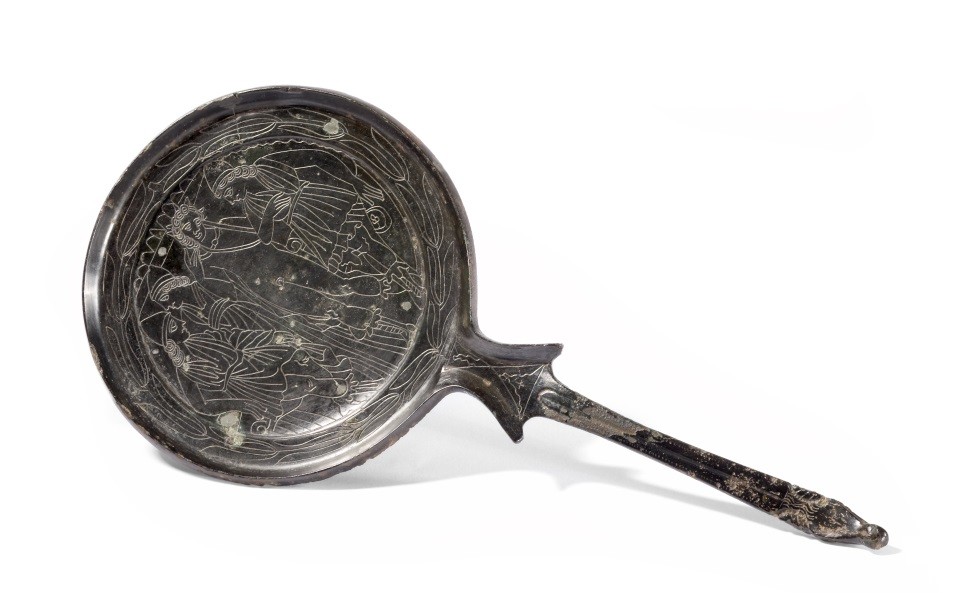This mirror is representative of the outstanding Etruscan collection, which goes back to August Kestner and has since been considerably expanded.
The mirrors are among the devices that can be described as characteristic. They were not only objects of everyday Etruscan life, but they were or are image carriers of mythological narratives and other representations from the Etruscan living environment.
The motif of the reverse: Trapezoidal part divided into four triangular fields by an x-shaped pattern and decorated with wavy lines. On the disc, a broad offset border strip, on top of which is a leaf pattern in the shape of a tulip running from bottom to top on both sides.
The relief shows the Dioscuri, Castor and Pollux, in the centre of which stands a clothed woman. The main figure represents a young Kabiros. (AVS)
Former collection August Kestner, Rome
en









